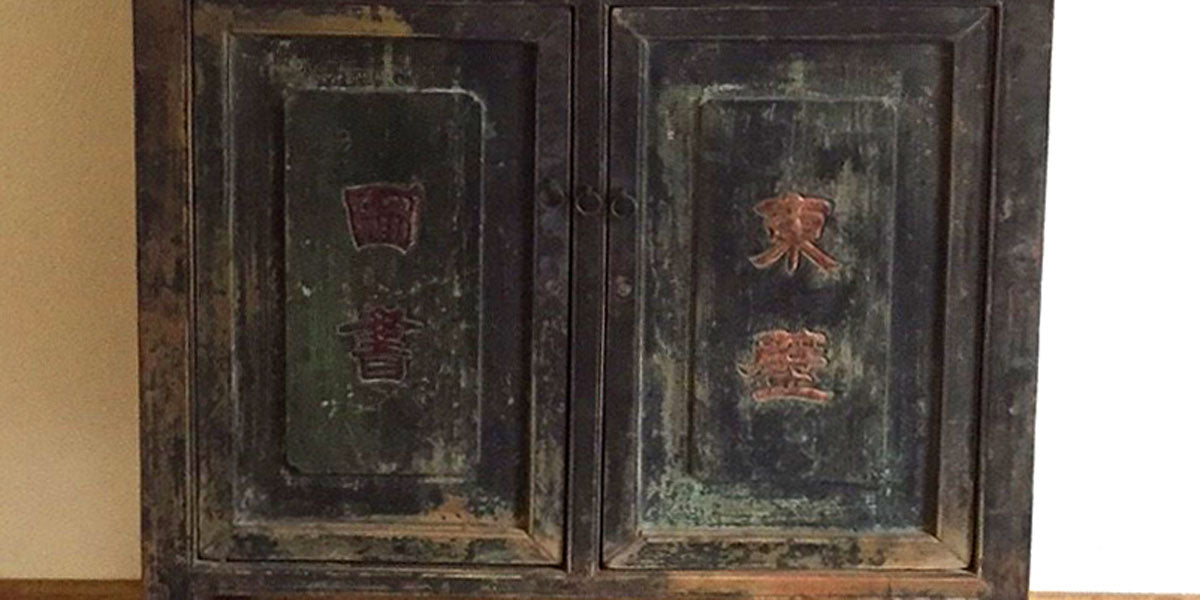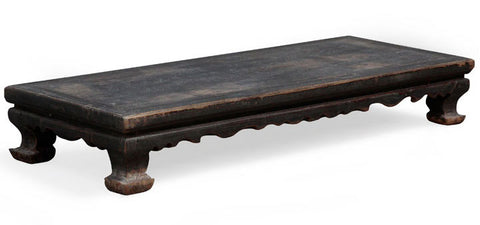
A beautiful ‘nanmu’ book cabinet – furniture with its own back story
Our latest container of Chinese antique furniture arrived this week, and with it the final pieces that I selected on my last visit out to Beijing. I’m really pleased with the collection we have right now. It’s a nice mixture between stripped down, understated cabinets and tables in beautiful woods and natural finishes and more striking lacquered and painted pieces. As ever, there are one or two particular gems – rarer items in styles or materials that I don’t often come across on my visits to the many antique warehouses of Beijing or Shanghai.
|
Nanmu Book Cabinet, Shanxi, circa 1800 |
Amongst the rarer pieces on this latest container is this lovely book cabinet from Shanxi province in central China that dates from around 1800. It was designed specifically to store books, which would have been stacked one of top of the other as was the custom in China rather than being stood on their ends as we tend to do in the West. At first glance it doesn’t look that special – the original dark lacquer is quite worn and the style is a classic ‘square-cornered’ box like design. It has a set of doors at the bottom, three small drawers in the middle and an open space above with a single shelf. But there are a couple of elements that make this quite a special find.Firstly, whilst the majority of furniture from Shanxi was made from elm wood, pine or sometimes walnut, this piece is made from a wood known in China as ‘nanmu’. Part of the laurel family, the wood naturally has a lovely olive brown colour, quite similar to walnut, and has a fine, smooth texture. It grows predominantly in South-West China and is highly resistant to decay – ideal for furniture making. As it was a rarer wood in China’s northern provinces, and because of its colour and texture, nanmu was quite highly prized and tended to be used in furniture made for the upper echelons of society. Whilst it was certainly not as valued or as expensive as the tropical hardwoods like zitan or huang-huali that were used for the court, nanmu was considered a step up from the more regular elm or other soft woods. Anyone able to commission a piece of furniture like this book cabinet would certainly have been fairly wealthy. |
|
Secondly, the doors of the cabinet are each inscribed with two Chinese characters in red. The characters on the left essentially read ‘history books’ while those on the right very loosely refer to a ‘reading room’. So this tells us that, not only was the owner rich enough to be able to order this item in nanmu wood, but it was commissioned for a specific purpose – to store his set of books on history, and to be placed in a room that was set aside as a library. So it is possible to imagine that the owner was not only wealthy but also liked to think of himself (and for others to think of him) as something of a scholar! One other piece in nanmu wood that is currently on display in our showroom is a beautiful, low daybed, also from Shanxi and dating from the same period. While the majority of daybeds I’ve seen are quite rustic in appearance – made from elm with large, chunky frames – this one is much more elegant. Narrower than most daybeds, it has some fine carving around the aprons and beautifully shaped little cabriole legs. Again, this is not an item that the common man in China would ever be able to afford, but would certainly have belonged to a well-to-do family. |
Nanmu Daybed, Shanxi circa 1800 |







Leave a comment